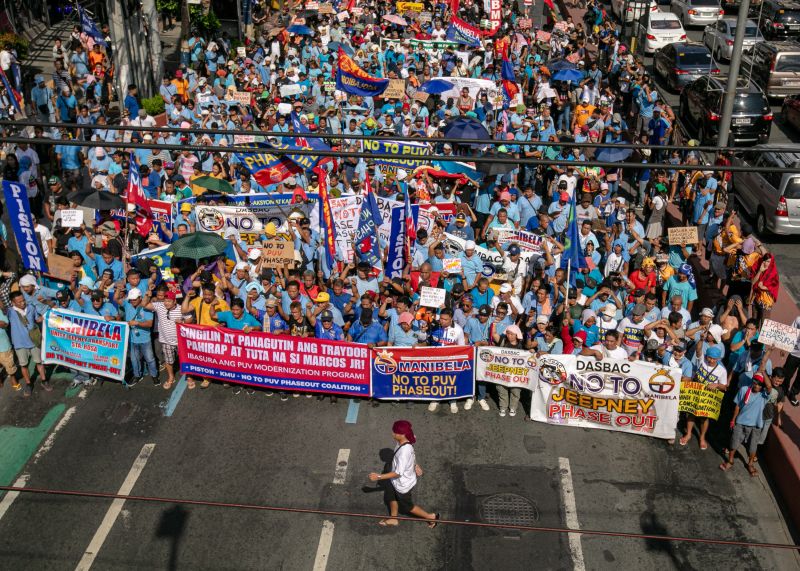
The Battle Over Jeepney Modernization in the Philippines

The iconic jeepneys of the Philippines are facing a modernization plan that has sparked controversy and protests. This article delves into the history of jeepneys, the government's modernization efforts, and the impact on drivers and commuters.
The Iconic Jeepneys of the Philippines
The Philippines is known for its iconic jeepneys, which rattle through neighborhoods across the country, serving as a vital mode of public transportation. These colorful vehicles are adorned with hand-painted designs, ranging from religious icons like the Virgin Mary to pop culture references such as NBA stars. Affectionately called the 'king of the roads,' jeepneys have been an integral part of Filipino culture and daily life for decades.
Mar Valbuena, chairman of transport group Manibela, has organized several protests against the jeepney modernization plan.
The history of jeepneys dates back to the post-World War II era when local mechanics repurposed surplus jeeps left behind by American troops. These vehicles were customized to accommodate civilian passengers, giving rise to the iconic jeepneys that still dominate the streets of the Philippines today. With approximately 200,000 jeepneys in operation, they continue to provide an affordable and accessible means of transportation in a country where the average annual income is around $3,500.
Jeepney fares start at just 20 cents (13 Philippine pesos), making them a popular choice for roughly 40% of commuters traveling to workplaces, schools, and malls. Despite their widespread popularity, the government has initiated a controversial modernization plan aimed at replacing traditional jeepneys with new minibuses.
Challenges and Resistance
The government's push for jeepney modernization has been met with resistance from both drivers and commuters. While the replacement of aging, polluting diesel-powered vehicles with newer, cleaner minibuses may seem beneficial, the reality is more complex. Jeepney drivers argue that the transition to modern vehicles is financially out of reach for many of them, potentially leading to fare hikes that could burden commuters.
Protests organized by transport groups and jeepney drivers have become a common sight, with concerns raised about the lack of funds and the pressure on drivers to take hefty loans to comply with the modernization plans. The cost of the new minibuses, priced at around $50,000 (2.8 million Philippine pesos), presents a significant barrier for individual drivers, many of whom are already operating on slim profit margins.
Jeepney drivers protesting the modernization plan on December 29, 2023 near Mendiola, Manila.
The transition to modern vehicles also requires drivers and small-time operators to join cooperatives or corporations in order to qualify for government loans and subsidies. This shift in ownership and operation has raised additional concerns among the affected stakeholders.
The Future of Jeepneys
The future of jeepneys hangs in the balance as the government's modernization plan faces ongoing challenges and pushback. While the initial deadline for surrendering franchises and consolidating into cooperatives has passed, the resistance from some jeepney owners persists.
According to official data, roughly 76% of jeepney owners have chosen to consolidate under the modernization program, forming over 1,700 cooperatives. However, activists dispute these figures and continue to demand a reevaluation of the government's plan. The debate surrounding the modernization of jeepneys reflects the broader issues of transportation, livelihoods, and public welfare in the Philippines.
As the government remains determined to implement the modernization program, the fate of the iconic jeepneys and the livelihoods of those who depend on them hang in the balance. The ongoing struggle between stakeholders underscores the complexities of modernizing public transportation while addressing the concerns of drivers and commuters alike.








